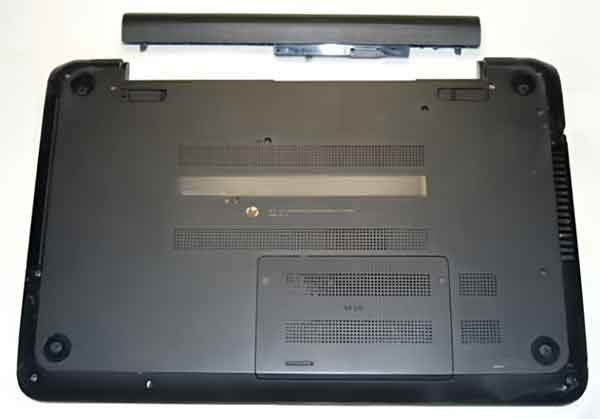Updated May 16, 2020
Did you turn off your laptop, and now it will not start up again? Maybe you closed the lid, and now it will not come out of sleep mode? If so, you may need to power reset your laptop computer.

This has to be one of the most frustrating problems with laptops, you press the start button, and nothing happens. No lights, no sounds, no display. It seems like it is entirely dead. And in a way, it is. If your laptop computer turned off while you were using it, a power reset would not help. That would be a completely different problem.
The problem is that the system has built-up residual electrical charge in the capacitors. And the only way to get it to run again is to discharge the electrical load. The majority of the time, it is a quick fix. But there are times when it is not a quick fix. Let me explain. This procedure requires that you completely disconnect all power sources, ac adapter, and battery.
If you can remove the battery in your laptop from the bottom of the case, this will be pretty quick. If the battery is inside the laptop case, then it can be tricky, as you will have to disassemble the laptop to get to the internal battery. If you feel uncomfortable about taking your computer apart, please contact a local computer repair specialist like Geeks in Phoenix.
- Disconnect all devices from your laptop. This includes docking stations, USB devices, external displays, etc..
- Disconnect the ac adapter.
- Remove/disconnect the battery. The following steps require access to the battery.

If the battery for your laptop is accessible from the bottom, remove it and proceed to the next step.

If the battery is not accessible from the bottom, you would need to disassemble your laptop to gain access to it. Before you or a technician takes the computer apart, try step #4 first. If, after trying step #4, your laptop still does not startup, then you may need to disassemble it to get to the battery.

Some batteries connect directly to the motherboard, and some connect via a cable. Depending on the type of battery your laptop has, you may or may not have to remove it.
- Hold down the Power button for 15 - 30 seconds. By holding down the Power button, you release all of the residual power left in the laptop. If you had to remove the base to get to the battery connection, place the bottom back on the computer and put it back in the standard operating position. Do not worry about screwing the base back on yet. Once you have discharged the laptop, you will reassemble it.
- Connect the ac adapter and plug it into an ac jack. Most instructions for releasing the residual electrical charge will have you reinstall/reconnect the battery first, then connect the ac adapter. If you leave the battery removed/disconnected, you avoid any issue that the battery might have, like low output.
- Press the power button. If the problem was a built-up residual electrical charge, your laptop should startup. The only error you might encounter is a warning about the battery missing.
- Shut down the laptop. If all went well, your computer started up and booted up the operating system. Just turn it off as you usually would.
- Disconnect the ac adapter.
- Reinstall/reconnect the battery. If you had to remove the base to get to the battery connection, you can reconnect it and screw the base back on to the laptop.
- Reconnect the ac adapter and start the laptop up again.
d24e8718-040b-4844-96be-ec85f9c1fcd6|1|5.0|96d5b379-7e1d-4dac-a6ba-1e50db561b04